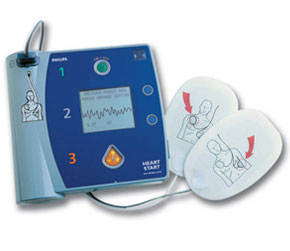Automated Defibrillator
As people grow older, one of the first organs to go bad is the heart. This isn’t a surprise, as the heart is doing a lot of work. It is beating millions and millions of times over the course of a lifetime, so it can be worn out, particularly if it is not taken care of like it should be. For those that are having heart problems, it can be very scary. Without our heart, we cannot survive more than a minute or two. This makes keeping the heart going very important for those struggling to survive. Luckily, modern medicine has given us some tools to fight heart disease. One of those tools is the automated defibrillator. It is a tool that will give you the ability to reset the heart if it stops beating. It is not a tool that always works, but it is the only really effective one that has the chance to bring a person’s heart back from not beating.
How an Automated Defibrillator Works
For those that aren’t familiar with what a defibrillator is or how it works, it may be a bit confusing. Most of us only know defibrillators as the machines on hospital television shows that doctors use to “shock” patients back to life. These machines require sometime to yell “clear!” before doing the shocking. These portrayals of defibrillators aren’t far from the truth. In fact, they do “shock” a patient in that they send an electrical impulse to a heart that has stopped working properly.
The heart beats by sending electrical signals to its muscle tissue. This impulse originates at the SA node, which is the pacemaker of the heart. When the cells that make up that node don’t work properly, or the muscle those cells are telling to beat die, this can throw a kink in the signal. When this happens, a heart attack can happen. An overwhelming number of times, a patient will die due to this. But when possible, an automated defibrillator can be used. The automated defibrillators are commonly called AEDs, which stands for “automated external defibrillators.” These are tools that will do all the work for you. Instead of you having to be the doctor and decide when and how much to “shock” a patient, AEDs will figure out all these details for you. This is why they are called automated!
Buying an Automated Defibrillator
When you are looking into purchasing an automated defibrillator, the first aspect you should consider is cost. Most likely, you will have to pay out-of-pocket for the device, so price should be a concern. Most automated defibrillators will run between $800-2000, depending on the model and type you buy. The cheapest model isn’t necessarily a “bad” model, but it may not have a lot of features. Which one you buy and how much you spend should be determined by both your budget and your need. Don’t spend a lot of money on an automated defibrillator, thinking the more money you spend, the more likely the device is going to save a life. This is not true! Be smart and look for something that will work for you!

